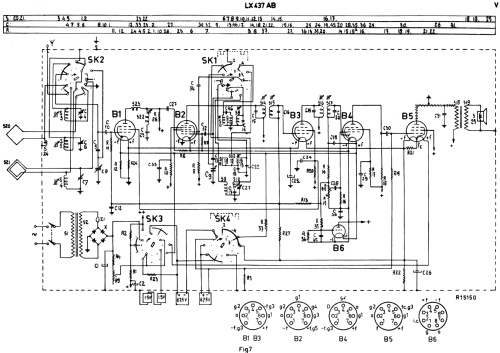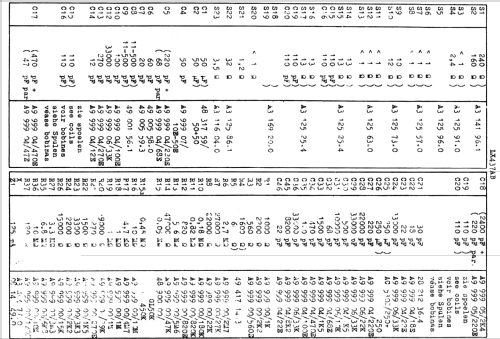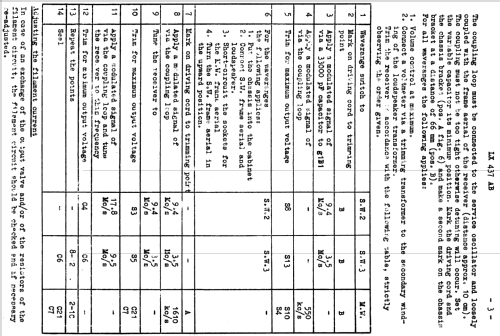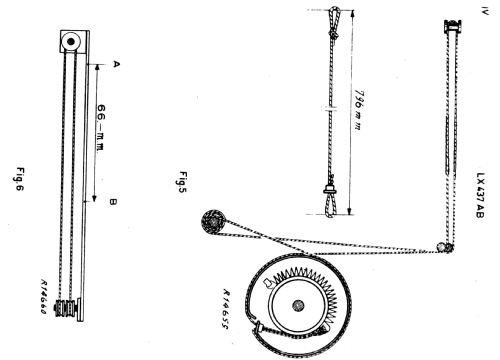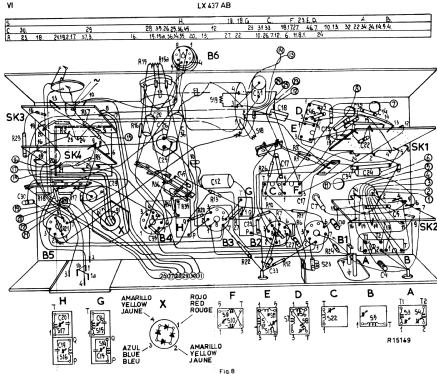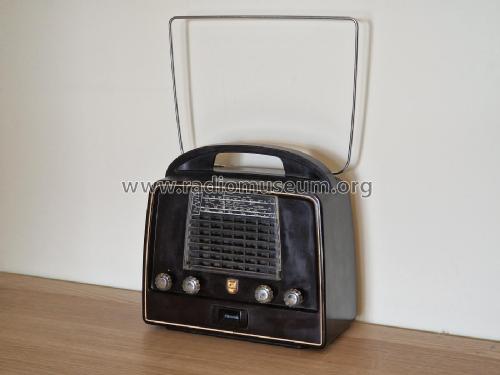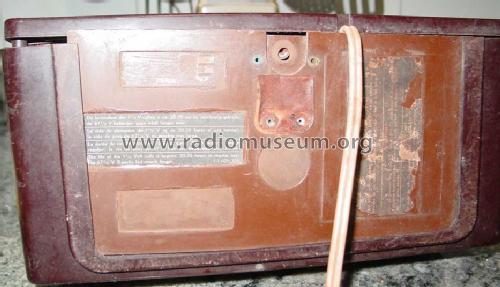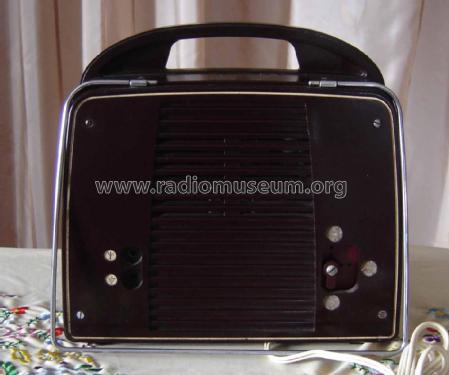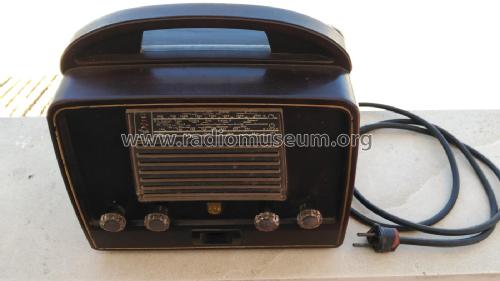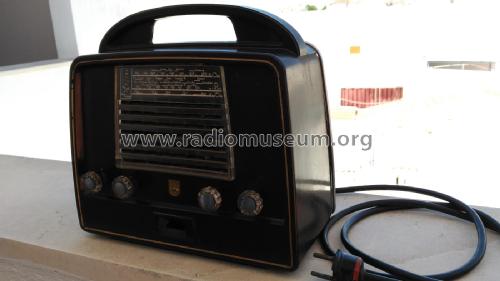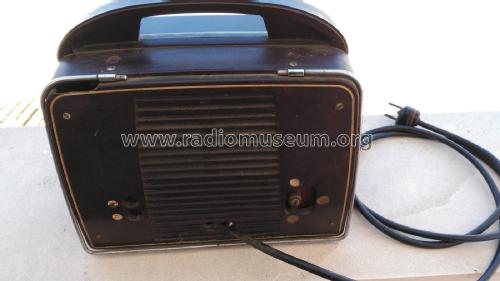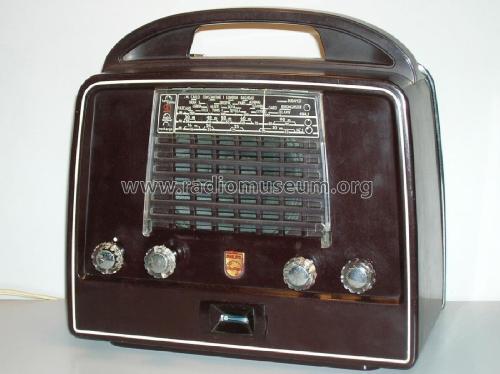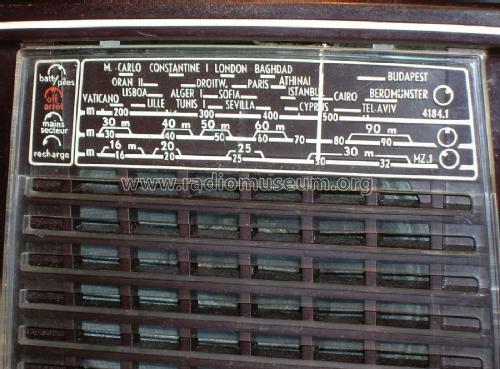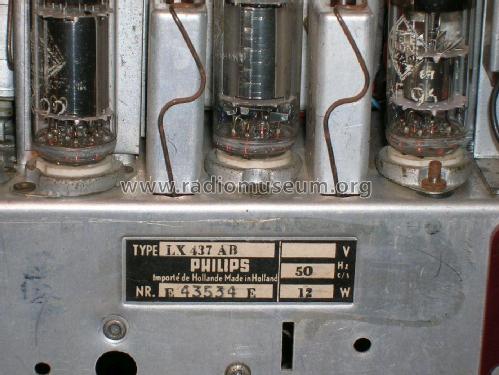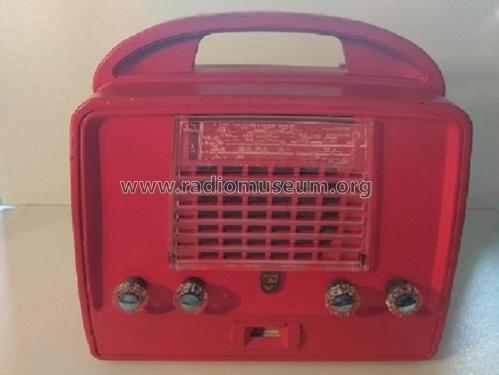- Paese
- Olanda
- Produttore / Marca
- Philips; Eindhoven (tubes international!); Miniwatt
- Anno
- 1954/1955
- Categoria
- Radio (o sintonizzatore del dopoguerra WW2)
- Radiomuseum.org ID
- 114083
Clicca sulla miniatura dello schema per richiederlo come documento gratuito.
- Numero di tubi
- 6
- Numero di transistor
- Semiconduttori
- Selengleichrichter
- Principio generale
- Supereterodina con stadio RF; ZF/IF 452 kHz; 2 Stadi BF
- N. di circuiti accordati
- 6 Circuiti Mod. Amp. (AM)
- Gamme d'onda
- Onde medie (OM) e 2 gamme di onde corte (2 x OC).
- Tensioni di funzionamento
- Rete / Batterie (ogni tipo) / AC 110; 150; 220 / 2 x 1,5 & 2 x 67,5 Volt
- Altoparlante
- AP magnetodinamico (magnete permanente e bobina mobile) / Ø 5 inch = 12.7 cm
- Potenza d'uscita
- 0.3 W (qualità ignota)
- Materiali
- Bachelite
- Radiomuseum.org
- Modello: LX437AB - Philips; Eindhoven tubes
- Forma
- Apparecchio portatile > 20 cm (senza la necessità di una rete)
- Dimensioni (LxAxP)
- 260 x 250 x 120 mm / 10.2 x 9.8 x 4.7 inch
- Annotazioni
-
The Philips receiver LX437AB features a tuned rf preamplifier with aperiodic coupling to the mixer stage.
Power consumption from AC mains: 17W. Selenium rectifier bridge.
- Prezzo nel primo anno
- 1,950.00 PTE
- Bibliografia
- -- Original prospect or advert
- Letteratura / Schemi (1)
- -- Original-techn. papers.
- Autore
- Modello inviato da Mario Coelho. Utilizzare "Proponi modifica" per inviare ulteriori dati.
- Altri modelli
-
In questo link sono elencati 5270 modelli, di cui 4414 con immagini e 3455 con schemi.
Elenco delle radio e altri apparecchi della Philips; Eindhoven (tubes international!); Miniwatt
Collezioni
Il modello fa parte delle collezioni dei seguenti membri.
Discussioni nel forum su questo modello: Philips; Eindhoven: LX437AB
Argomenti: 1 | Articoli: 3
Hi.Radiophiles, It came to me for repair/recover one portable radio LX 437 AB.I don't have its schematic,but supose may be similar to model LI 437/AB.My problem is that I don't have the correct filament tensions when switched to the mains.As a matter of fact,the wires that should conect to the batteries have been cut so I can not test it with the batteries once they are not there.And some help would be very welcome if somebody could explain me the wiring of the tubes filaments,once I find very dificult to understand the complexity of the switch wiring together with the dificult access to components and lack of data of voltages.
May I wish to all members and their families a Merry Christmas and a Happy new Year with greetings from our Sunny Algarve!
Antonio Barros-Regada, 21.Dec.13
